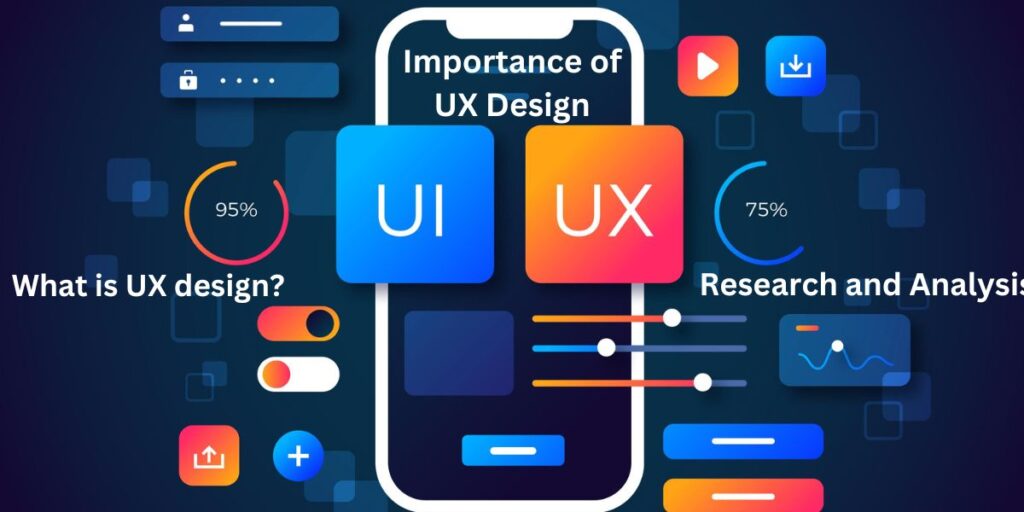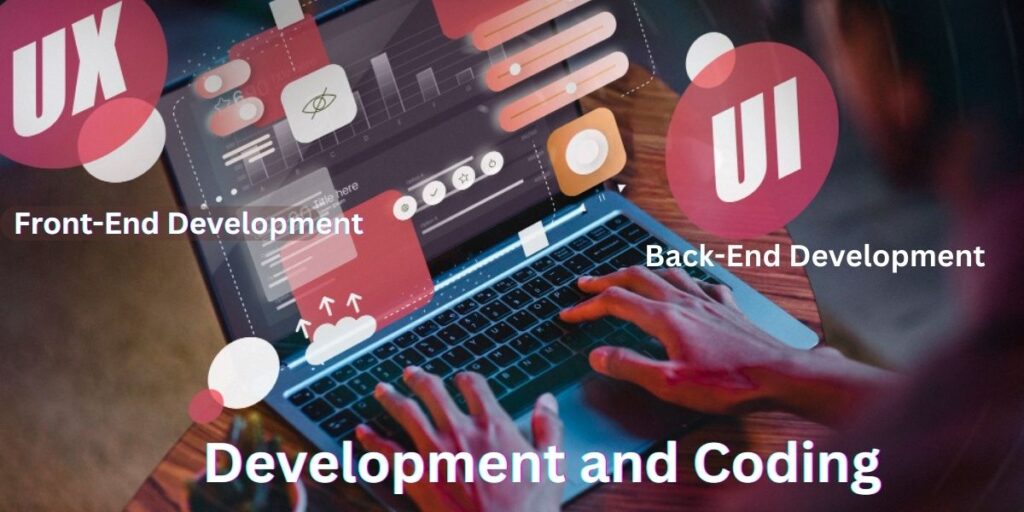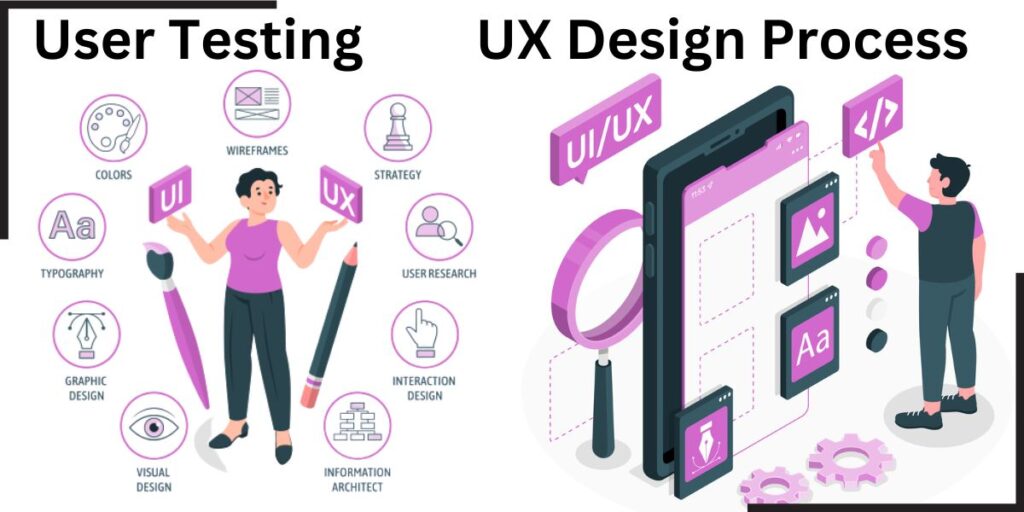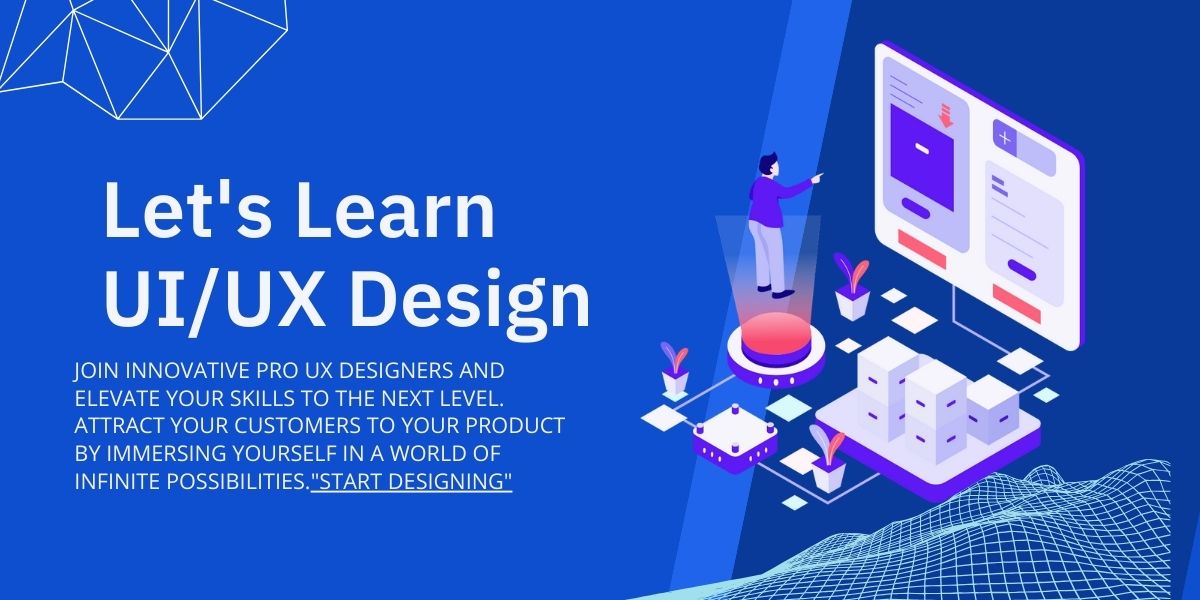In today’s advanced age, customer experience (UX) design is an essential part of building effective sites and apps. Understanding the UX design process is important for organizations and engineers who need to create objects that look attractive as well as provide customization. In this article, we’ll walk you through the UX design process from start to finish, point-by-point, making sure you understand the key criteria and processes to deliver a great customer experience.
What is UX design?
Customer experience (UX) design is to develop openness and satisfaction in the interaction between the customer and the product, which is a common way to improve customer satisfaction. It is UX design that integrates various components including data engineering and client discovery to create a seamless and enjoyable experience for the end customers of your product.
Importance of UX Design
UX design is important because it directly impacts how customers perceive and are attracted to your product. It is determined by customer experience that customer satisfaction can lead to better conversion rates, which ultimately contribute to the growth of your business or industry.

Research and Analysis
Understanding your target audience
One of the most essential steps in the UX design process is to get a better understanding of your target audience. This includes providing better services by understanding their needs and preferences and identifying problem areas. This will help in conducting statistical surveys and tailoring your plan to meet the specific needs of your customers.
competitor analysis
Analyzing your competitors’ products through the UX design process can provide valuable information about what works well and what doesn’t in your industry. You can study their strengths and weaknesses in UX design. So you can identify opportunities to differentiate your product and provide a better user experience.
User Surveys and Interviews
UX design can directly connect with your potential users through surveys and interviews to get their valuable feedback and insights. This interaction can help you refine your design based on real user preferences and expectations.
Unlock your creative potential
Join innovative pro UX designers and elevate your skills to the next level. Attract your customers to your product by immersing yourself in a world of infinite possibilities.“Start Designing“
ideas and concepts
Brainstorming and idea generation
At this stage, brainstorming meetings are held to generate new ideas for creative ideas and ideas for your items. These ideas serve as the rationale for your project and help you visualize the customer experience.
Creating User Personas
Customer personas are fictional depictions of your ideal customers. These include segment data, behavioral criteria, and customer objectives. Creating customer personas can guide your planning choices and ensure that you meet the needs of different customer segments.
information architecture
It involves sorting and organizing the joys and highlights of your items in a sensible and easy-to-use manner. Well-planned data engineering ensures that customers can undoubtedly find and find what they are looking for.
Wireframing and Prototyping-
Making Wireframes:- Wireframes are skeletal blueprints of your item’s UI. They give a visual portrayal of the format and usefulness without the interruption of varieties and designs. Wireframes are fundamental for arranging the format and stream of your plan.
Creating Intuitive Models:- Models are intuitive models of your item that permit clients to encounter its usefulness before it’s completely evolved. This stage recognizes convenience issues and assembles client criticism for additional enhancements.
Convenience Testing:- Convenience testing includes having genuine clients connect with your models and give criticism. This iterative cycle refines your plan to guarantee it meets client assumptions.
Designing the User Interface (UI)
Visual Design Principles:- The Visual Design Principles of UX center around the feel and the profound effect of your item. It incorporates picking tones, typography, and visual components that align with your image and make a satisfying visual encounter.
Consistency and Branding:- Keeping up with consistency in plan Consistency and Branding across your item assembles trust and acknowledgment among clients. Consistency in format, variety of plans, and typography make a durable and proficient appearance.
Mobile Responsiveness:- In the present Mobile-driven world, guaranteeing that your plan is responsive and capabilities flawlessly on different gadgets and screen sizes is urgent for giving a phenomenal client experience.
“Transform ideas into intuitive design”
Unleash your UX design process potential. Learn the secrets to crafting intuitive user experiences that resonate with your audience. 🖥️Explore UX Mastery🎨
Development and Coding-
Front-End Development:- Front-end improvement includes executing the UX Design process in HTML, CSS, and JavaScript. Cooperation among creators and engineers is fundamental to guarantee that the plan vision is precisely converted into code.

Back-End Development:- Back-end development centers around the server-side usefulness that upholds the UI. It incorporates data set administration, server arrangements, and guaranteeing information security.
Collaboration between Design and Development Teams:- Powerful correspondence and Collaboration between Design and Development Teams are indispensable to guarantee that the eventual outcome lines up with the plan particulars and client assumptions.
Testing and Quality Assurance
Functional Testing:- Utilitarian testing confirms that all highlights and functionalities of your item fill in as planned. It includes thorough testing to distinguish and determine any bugs or issues.
Performance Testing:- Performance Testing guarantees that your item can deal with an enormous number of clients without dialing back or crashing. It evaluates the item’s reaction time, adaptability, and generally speaking execution.
Cross-Browser Compatibility:- Testing your item on various internet browsers and gadgets is fundamental to guarantee that it works accurately and looks predictable across different stages.
User Testing
Gathering User Feedback:- Gathering User Feedback from genuine clients utilizing your item and giving input on their experience. This criticism is priceless for making important upgrades and refining the plan.
Iterative Design:- The UX Design process is iterative, implying that it includes various patterns of testing, criticism, and refinement. This approach considers constant improvement and streamlining.
Finalizing the Design:- Subsequent to integrating client input and making fundamental changes, the last plan is prepared for execution.

Boost Your UX Career
Supercharge your UX career with expert insights and practical projects. Take the first step toward a brighter future. 📊 Advance your career 📊
Launch and signs-
Personogen strategies:- Choosing the correct regional strategy for UX Design, whether it is a soft launch. It depends on the scope and goals of your project. Soft launch from UX Design involves releasing your product to limited audiences to gather initial response, while gradually releasing the roll-out features in a phased manner to the audience. When you have to launch your product on a complete release meaning on a complete user basis.
Surveillance after launch:- After the launch, it is necessary to closely monitor the performance of your product. This involves tracking user behavior and identifying any new issues. Which helps to meet the expectations of the product user. Regular updates and maintenance are also necessary to run your product smoothly.
Measure user experience-
key metrics:- It is also necessary to measure the success of your UX design. Its major matrix includes the user’s satisfaction rating, conversion rate, bounce rate, and work success rate. These matrix valuables provide satisfaction with your product and how well your design is echoing with users.
Analytics equipment:- Use analytics tools such as Google Analytics, Hotjar, or MIXPANEL to collect data on user behavior and interaction. These devices help you identify areas that require improvement and track design changes over time.
Continuous Improvement-
Reactive:- The UX design does not end with launching the process but it is an ongoing process journey. For this, collect user feedback through surveys, testing, and customer support channels. Use this reaction to make an informed design decision and promotion based on it.
Put to:-Nowadays the digital landscape is constantly developing, and the user’s expectations also change over time. Stay updated on your product with the latest UX trends and emerging technologies to remain competitive and the market.
Read More- App Design Principles for User-Friendly Interfaces.
conclusion –
In the current computerized world, the UX design process has become an essential part of making effective and easily used items. By the way, UX design is a frequent design process of progress. Continue to update your product based on customer criticism keep updating information about industry flow, and focus on customer participation with all your plan options.
We are confident that this article will provide you the important information of knowledge about the UX design process which is a permanent creative result for your customers.
FAQs-
Q1:- What is the difference between UX and UI design?
UX (User Experience) design focuses on the overall user journey and satisfaction, including usability and functionality. UI (User Interface) design, on the other hand, deals with the visual elements and layout of the product.
Q2:- How long does the UX design process typically take?
The timeline for UX design can vary depending on the project’s complexity and scope. It can range from a few weeks for a simple website to several months for a complex application.
Q3:- Is UX design only relevant for websites and apps?
While UX design is commonly associated with digital products, its principles can be applied to any product or service that involves user interaction, including physical products and customer service processes.
Q4:- Can small businesses benefit from UX design?
Absolutely. UX design is essential for businesses of all sizes. Small businesses can benefit by creating user-friendly and competitive products that attract and retain customers.
Q5:- What are the key challenges in UX design?
Some common challenges in UX design include balancing user needs with business goals, keeping up with technological advancements, and ensuring accessibility for all users, including those with disabilities.



